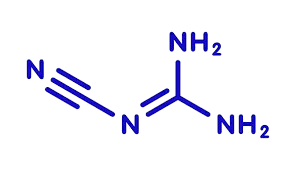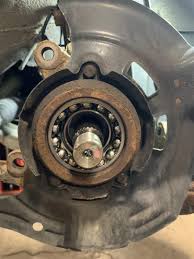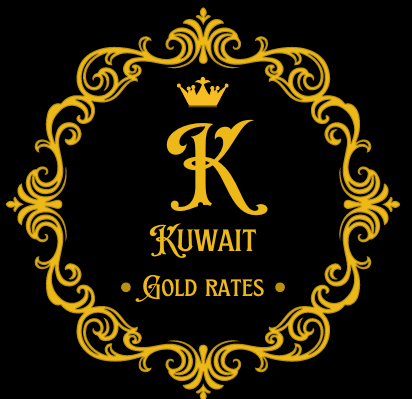Gallic acid is a naturally occurring compound found in various plants, fruits, and nuts. Known for its antioxidant, anti-inflammatory, and antimicrobial properties, gallic acid is used across multiple industries, including pharmaceuticals, cosmetics, food and beverages, and even leather tanning. Its applications range from being a key ingredient in medicinal and skincare products to being a natural additive in the food industry. With its versatile use, understanding the production cost of gallic acid is essential for companies involved in its manufacture or those who rely on it as a raw material. This article provides a detailed breakdown of gallic acid production costs, the factors influencing these costs, the production process, market dynamics, and strategies for cost optimization.
The Role of Gallic Acid in Modern Industries
Gallic acid is a phenolic acid derived from natural sources like oak bark, sumac, and tea leaves. Its antioxidant properties make it a popular ingredient in health supplements and skin care products, while its antimicrobial characteristics make it valuable in food preservation and medicinal applications. Additionally, it’s used in the synthesis of dyes, inks, and in the tanning industry for leather processing. Given its broad range of applications, understanding gallic acid production costs is essential for businesses aiming to optimize operations and remain competitive in their respective markets.
Request a Free Sample For Gallic Acid Production Cost – https://www.procurementresource.com/production-cost-report-store/gallic-acid/request-sample
Key Factors Influencing Gallic Acid Production Costs
The production of gallic acid involves several key cost factors that determine its overall expense. By understanding each of these cost drivers, companies can identify areas for potential cost reduction and improve efficiency.
- Raw Material Costs
Gallic acid is commonly derived from plant-based sources such as gallnuts, tara pods, and sumac leaves. The availability and price of these raw materials can fluctuate based on factors such as climate conditions, harvest yield, and geographic location. For example, gallnuts, one of the primary sources of gallic acid, are harvested in limited regions, and any disruption in supply can increase raw material costs. Additionally, sourcing organic or sustainably grown plant materials may add to the cost but can provide an edge in the market for eco-conscious consumers. - Extraction and Fermentation Costs
The production of gallic acid often involves extraction and fermentation processes to isolate the compound from plant sources. These processes require specific enzymes, solvents, and microorganisms, depending on the method used. Fermentation, which utilizes microbial cultures to break down tannins into gallic acid, requires precise environmental controls and can be time-consuming. The costs associated with procuring enzymes, maintaining microbial cultures, and ensuring controlled conditions contribute to overall production expenses. - Labor and Operational Costs
Skilled labor is essential in gallic acid production to monitor and control the extraction and purification processes. Labor costs, along with operational expenses such as equipment maintenance, contribute to the overall production budget. In countries with high labor rates, these costs can be significant. Additionally, operational expenses include costs for health and safety measures, facility maintenance, and quality control processes. Investing in automation for parts of the production process can help reduce these labor expenses, though this often requires significant upfront investment. - Energy Consumption
The extraction, purification, and drying stages in gallic acid production are energy-intensive, requiring substantial electricity for heating, cooling, and drying processes. The cost of energy, which varies depending on the geographic location of production facilities and regional energy prices, is a key factor in determining the overall production cost. Facilities in regions with access to affordable and reliable energy sources may achieve lower production costs, while those with high energy costs may face increased expenses. - Technological Advances and Equipment Costs
Technological advancements in extraction and fermentation techniques can enhance efficiency and reduce production costs in the long run. However, these technologies often require significant upfront investments in high-performance reactors, fermentation tanks, filtration systems, and drying equipment. While the adoption of advanced technologies can improve yield, reduce waste, and save on energy costs, the initial capital required for equipment acquisition and ongoing maintenance can impact production budgets. - Environmental and Regulatory Compliance
Gallic acid production involves using solvents and biological agents, which can result in by-products and waste materials. Compliance with environmental regulations for waste management, emission control, and sustainable practices is necessary to avoid fines and maintain a positive brand image. Implementing environmentally friendly production practices, such as using biodegradable solvents and recycling waste, can add to production costs, but may also offer benefits, such as tax incentives or improved brand reputation. - Transportation and Logistics Costs
Transporting raw materials to production facilities and distributing the finished product to end-users incurs logistics costs. The cost of transportation can vary based on fuel prices, distance to markets, and shipping regulations. For international distribution, tariffs and customs duties can also affect overall expenses. Efficient logistics management and strategically located production facilities can help reduce these costs, while remote or rural locations may face higher expenses due to greater distances from supply chains.
Gallic Acid Production Process: A Breakdown of Costs
Understanding the production process of gallic acid can provide insights into the cost structure associated with each stage. Here’s a step-by-step breakdown of the gallic acid production process and the associated expenses.
- Raw Material Preparation and Extraction
The production process begins with the preparation of plant-based raw materials, such as gallnuts or sumac leaves. These materials undergo extraction, where solvents or acids are used to break down plant tissues and release tannins, which are then converted into gallic acid. Costs at this stage include expenses for raw materials, solvents, extraction equipment, and labor for handling and processing the materials. - Fermentation
In some methods of gallic acid production, fermentation is employed to break down tannins further. Microbial cultures or enzymes are used to catalyze this conversion, which requires precise control over temperature, pH, and nutrient levels. Fermentation costs include expenses for microbial cultures or enzymes, energy for temperature control, and labor for monitoring and managing the fermentation process. - Purification and Filtration
After fermentation, the gallic acid solution undergoes purification to remove impurities and by-products. Purification involves filtration, centrifugation, and sometimes additional chemical treatments to achieve a high purity level suitable for various industrial applications. Costs in this stage are driven by energy requirements, filtration materials, and equipment maintenance, as well as labor for quality control and monitoring. - Drying and Crystallization
Once purified, the gallic acid is dried to remove any remaining moisture, often through a crystallization process to produce a stable, solid form. The drying process is energy-intensive, requiring equipment to evaporate water content and produce a powder or crystalline form of gallic acid. Costs in this phase include energy for drying equipment, labor for handling and quality assurance, and packaging materials. - Packaging and Distribution
The final step involves packaging gallic acid for transport and storage. Packaging must be secure to prevent contamination or degradation during transportation. Distribution costs vary depending on the intended markets, distance, and mode of transport. Costs in this phase include packaging materials, logistics management, and transportation expenses, especially for international shipments.
Market Dynamics and Pricing Trends
The price of gallic acid is influenced by market demand, availability of raw materials, and competition. Here’s a look at the major factors affecting gallic acid pricing and market dynamics.
- Demand from End-Use Industries
The demand for gallic acid is driven by its applications in various industries, including pharmaceuticals, food and beverages, and cosmetics. Health-conscious consumers are fueling demand for antioxidant-rich products, while pharmaceutical companies continue to use gallic acid for its medicinal properties. Additionally, the food industry relies on gallic acid as a preservative due to its antimicrobial properties. Any growth in these sectors, especially in health and wellness, contributes to higher demand for gallic acid. - Availability of Raw Materials
The supply of raw materials, such as gallnuts and sumac, influences the cost of gallic acid production. Variations in crop yield due to weather conditions, pests, or other factors can affect the availability of raw materials, leading to price fluctuations. Limited sourcing regions and seasonal variations also impact raw material prices, which directly affect the cost of production. - Environmental and Sustainability Trends
With increasing environmental awareness, companies are seeking sustainable production methods. This trend has led to the development of eco-friendly extraction processes and biodegradable solvents, even though these methods may add to production costs. Companies that adopt sustainable practices may have a competitive advantage in markets where environmental impact is a concern, justifying the potential increase in production costs. - Competitive Landscape and Innovation
As demand for gallic acid rises, companies are investing in innovative technologies to enhance production efficiency. The competitive landscape motivates producers to adopt cost-saving measures, explore new raw material sources, and improve product quality. Innovations in biotechnology, such as enzyme-based extraction, can improve yield and reduce costs, giving companies a competitive edge in the market.
Cost Optimization Strategies for Gallic Acid Production
To remain competitive in the gallic acid market, companies can adopt various strategies to optimize production costs. Here are some effective methods for managing expenses and improving profitability:
- Sustainable Raw Material Sourcing
Exploring alternative sources of raw materials or securing long-term supply agreements can help mitigate risks associated with seasonal variations and fluctuations in raw material costs. Sustainable sourcing practices can improve brand reputation and appeal to environmentally conscious consumers, adding value to the final product. - Process Optimization and Energy Efficiency
Implementing energy-efficient practices can yield substantial cost savings, especially in energy-intensive stages like drying and crystallization. Upgrading equipment, recovering waste heat, and optimizing the fermentation process can reduce overall energy expenses. Additionally, adopting technologies like membrane filtration or supercritical fluid extraction may improve yield and reduce resource consumption.
Contact Us:
Company Name: Procurement Resource
Contact Person: Leo Frank
Email: sales@procurementresource.com
Toll-Free Numbers:
- USA & Canada: +1 307 363 1045
- UK: +44 7537171117
- Asia-Pacific (APAC): +91 1203185500
Address: 30 North Gould Street, Sheridan, WY 82801, USA


